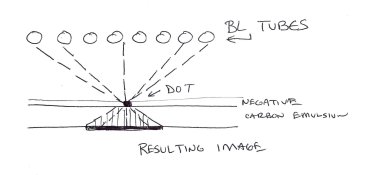holmburgers
Member
I think it's an interesting question at the very least, and despite that it may appear to be a case of barking up the wrong tree, I think it's garnered undue razzing.
If I can say that my tissue needs X mJ/cm² at normal sensitization; then everytime I encounter a new light-source, a new day where the sun or weather is different, I can take a reading (or several readings throughout my exposure) and multiply that number (mW/cm²) by the number of seconds to get mJ/cm².
How hard is that?!?
Then I have a specific target number that I'm striving for everytime. The sun has become my NuArc!
Assuming outright that this isn't worth investigating, I think, is somewhat presumptuous. I can understand your positionthough; I'm sure it's irritating to see an under-experienced newbie putting the cart before the horse....
Well my horse and I are perfectly happy in this arrangement!
If I can say that my tissue needs X mJ/cm² at normal sensitization; then everytime I encounter a new light-source, a new day where the sun or weather is different, I can take a reading (or several readings throughout my exposure) and multiply that number (mW/cm²) by the number of seconds to get mJ/cm².
How hard is that?!?
Then I have a specific target number that I'm striving for everytime. The sun has become my NuArc!
Assuming outright that this isn't worth investigating, I think, is somewhat presumptuous. I can understand your positionthough; I'm sure it's irritating to see an under-experienced newbie putting the cart before the horse....
Well my horse and I are perfectly happy in this arrangement!








